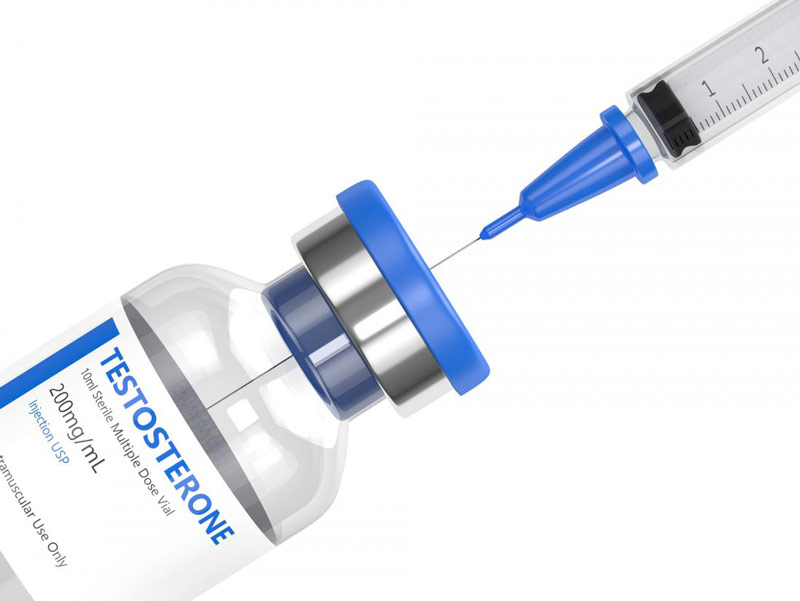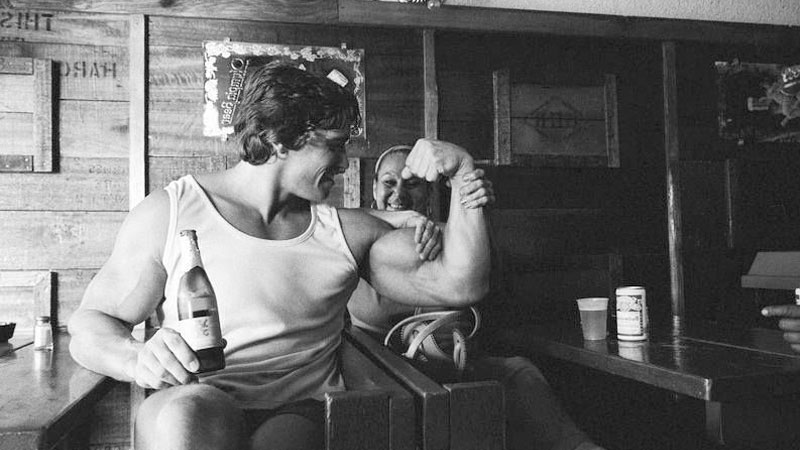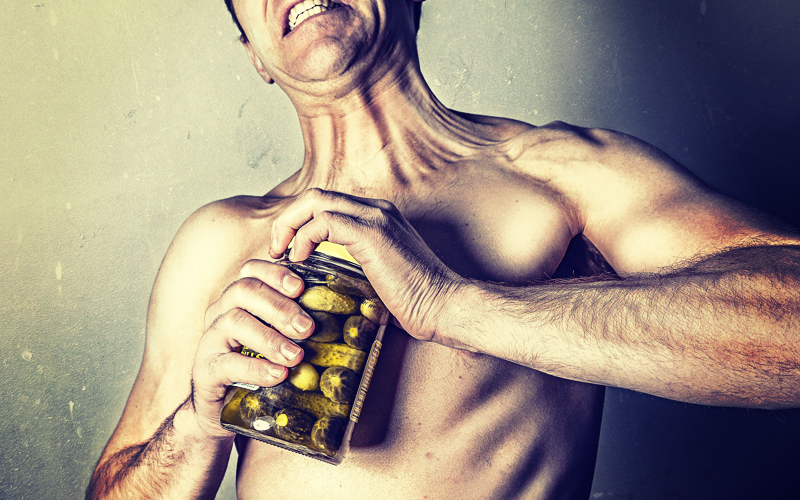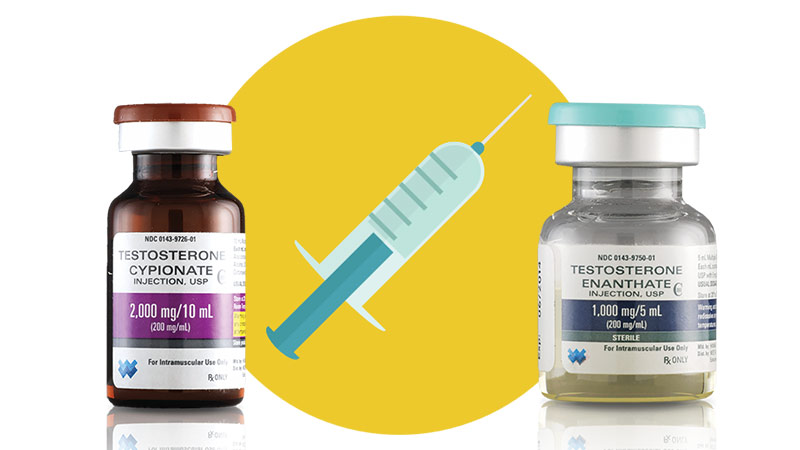
Testosterone is a big deal for most guys – without it, our alpha traits wouldn’t exist. So, when natural levels are low, many men turn to testosterone injections as a solution. Here’s what you need to know about the usage, risks and health effects associated with them…
Article Brodown:
- What is testosterone?
- What are testosterone injections?
- Usage & Dosage
- Side effects
- Testosterone Injection FAQs
- Conclusion
What is testosterone?
Testosterone is the male sex hormone produced naturally in the testes. It plays a key role in muscle mass, bone mass, sex drive, and healthy sperm production.
As an androgen hormone, testosterone is also responsible for your masculine traits. These include the likes of:
- Hair growth
- Voice deepening
- Sexual performance and libido
- Increased red blood cell production, stamina, energy, and endurance
- Boosted absolute strength
- Lower levels of body fat
Testosterone production amplifies as you progress into adulthood, especially during puberty. Normal healthy men average about 300-1,000 ng.DL of total T in their system depending on age.
Once you reach 30 years of age your testosterone levels naturally start to drop on average 1-2% per year. If you abuse steroids, have a poor diet and/or lifestyle, decline may happen even quicker. Some steroid abusers stop natural T production altogether and become deficient.
What are testosterone injections?
A testosterone injection is one way of counteracting the side effects of hypogonadism (low testosterone). Users simply inject a shot of synthetic lab-created testosterone into their body to raise their total levels.
It is illegal in the US and UK to purchase testosterone without a prescription. Therefore, the only way to buy T shots outside of the healthcare system is on the black market.
Although it may be illegal some men still choose to do this. Their goals are mainly to improve sports performance or simply reclaim lost masculinity.
If athletes are caught unlawfully using testosterone, they’re likely to face punishment. Notable examples include the likes of cyclist Lance Armstrong and footballer Diego Maradona. Careers can be cut short and legacies tarnished from a single offense.
 Usage & Dosage
Usage & Dosage
Doctors typically prescribe testosterone injections to treat hypogonadism caused by medical conditions [1]. These include issues caused by the testes, hypothalamus (brain), or pituitary gland (brain).
However, age-related hypogonadism isn’t always treated by T shots. This is because a natural decline in testosterone as a man gets older is not a medical problem.
The typical dosage of Testosterone Undecanoate is:
- An initial 750 mg
- Followed by 750 mg after 28 days
- Then another 750 mg every 70 days after
Testosterone Enanthate and Cypionate, on the other hand, differs slightly. Usual adult doses consist of:
- 50-400 mg IM injections every 14-28 days
People abusing testosterone injections as a performance-enhancing steroid may not stick to this protocol. In fact, many may elevate the levels to try and experience a heightened effect.
Side effects
Taking testosterone shots doesn’t come without risks. There are numerous side effects associated with administering T with a needle – some of which can be life-threatening.
Therefore, all possible side effects should be explained clearly by the administering medical professional. Patients must then acknowledge they understand the risks before accepting injections.
If you buy testosterone on the black market, it’s extremely unlikely you’d be warned about the possible dangers. After all, you are purchasing the synthetic hormone illegally.
Possible side effects from injecting artificial testosterone include:
- Heart attacks
- Mood swings and heightened aggression
- Increased risk of liver and kidney disease
- Depression, schizophrenia and suicidal thoughts
- Reproduction issues
- Oily skin and severe acne
- Weight can and gynecomastia (man-boobs)
- Increased belly fat
- Infertility
- Balding
Testosterone replacement therapy also raises the risk of having a stroke by 30%. [2] This is due to synthetic testosterone causing blood cell count to increase as well as thicken – resulting in polycythemia.
Not only that, but there’s an undeniable connection between TRT and cardiovascular disease. One study of over 50,000 men even uncovered that those over 65 had twice the chance of a heart attack while undergoing testosterone replacement therapy. [3]
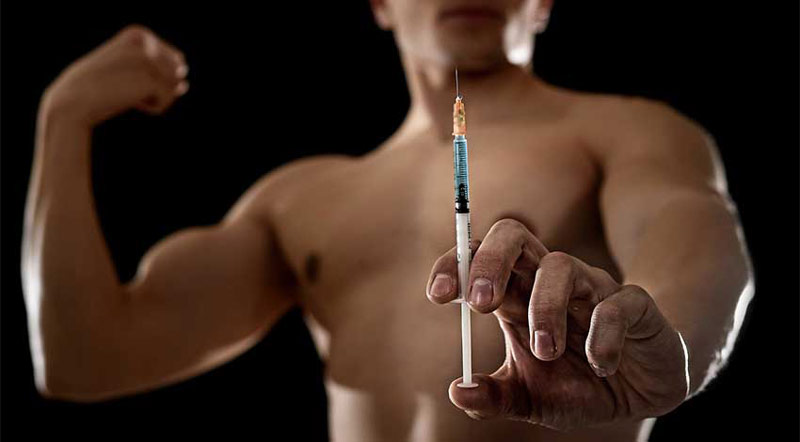 Testosterone Injection FAQs
Testosterone Injection FAQs
Is testosterone a steroid?
The answer to this isn’t so black and white. In short – yes and no.
Based on biological classification testosterone is considered a natural steroid hormone. This is because it is synthesized inside the body by cholesterol.
However, when men talk about steroids, they’re typically referring to anabolic steroid drugs. In terms of the T you inject this will be exogenous testosterone – a synthetic creation.
The difference is simply in the context.
Yes, natural testosterone is a steroid hormone synthesized by cholesterol. Yet, it is not a ‘steroid’ in the terms of synthetic lab-made anabolic steroids made for injection.
What is the normal level of testosterone for an average man?
Normal levels of testosterone for the average healthy male are 300-1,000 ng/dL.
How do you get testosterone injections?
Testosterone injections are typically administered by a doctor if you need them. Purchasing T shots in any other way without a prescription is illegal.
Where is the testosterone needle injected?
Injection site is usually in the gluteal muscles. However, if your doctor lets you handle the needle yourself, this will most likely be in the thigh.
Care should always be taken to inject TRT deeply. Not pushing the needle in far enough runs the risk of intravascular injection.
Are there risks from the first dose?
Yes, complications can even arise from the very first injection. These include urges to cough, chest pain, throat tightening, dizziness, and dyspnea.
Life-threatening reactions have also been reported to happen during or immediately after injecting testosterone. For this reason, patients must be observed for at least 30 minutes after receiving shots.
Can taking testosterone injections stop natural testosterone production?
Abusing testosterone injections can stop natural production of the hormone altogether. As synthetic T raises overall testosterone levels inside the body, signals are sent to the brain telling it to stop natural production.
Simply put, your body will think it doesn’t need to make T itself. You’ll ultimately be left testosterone deficient leading to TRT reliance and other health complications.
Are there ways to naturally increase testosterone without injections?
Yes, normal healthy men can raise their testosterone levels without using testosterone injections. Check out this guide to SpotMeBro’s top 8 natural T boosting secrets for more info.
Testosterone boosting supplements are also an option for men. These are products containing ingredients scientifically proven to support T production, which offer a safe and legal alternative to testosterone injections.
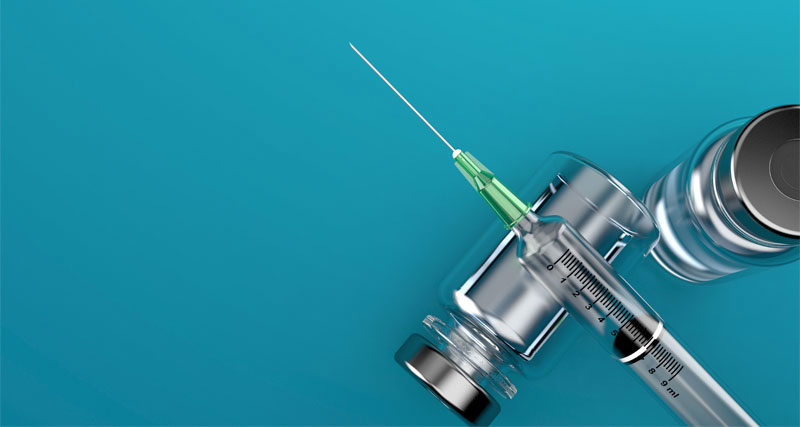 Conclusion
Conclusion
Testosterone injections are a type of treatment used to combat medically induced hypogonadism.
While created originally to help men with low T, they have become increasingly popular as performance-enhancing drugs. Therefore, many anti-doping bodies consider unprescribed injecting of testosterone to be steroid abuse.
The testosterone administered via T shots is not the naturally occurring androgen hormone produced by the body. It is instead a lab created synthetic version developed purposefully for medical use.
Injecting testosterone runs the risk of many side effects, even when medically prescribed. Some of these are life-threatening, especially if the dosage is not controlled by a doctor. Steroid abusers who are not trained to administer the drug are at an even greater risk of serious complications.
References
- Kumar P, et al. Male hypogonadism: Symptoms and treatment. J Adv Pharm Technol Res. 2010
- Kuehn BM. Cardiovascular Risks of Testosterone. 2014
- Finkle W, et al. Increased Risk of Non-Fatal Myocardial Infarction Following Testosterone Therapy Prescription in Men.PLoS ONE. 2014
